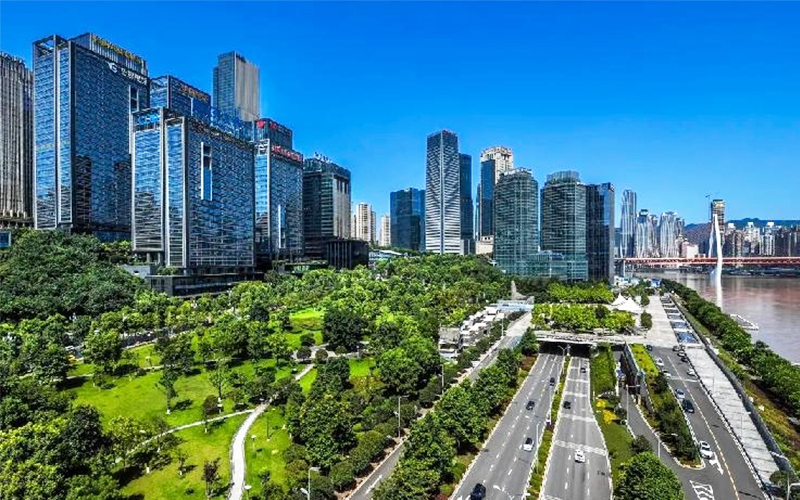 Bridging News
Bridging News
Chongqing Advances High-End Manufacturing for New Quality Productive Forces | Insights
Chongqing - According to the Chinese government work report submitted Tuesday to the national legislature for deliberation, the country will strive to modernize the industrial system and develop new quality productive forces at a faster pace. Chongqing responds by striding towards advancing high-end manufacturing.
With innovation leading, new quality productive forces mean advanced productivity freed from traditional economic growth models. It features high technology, high efficiency, and high quality and aligns with the country's new development philosophy, said Chinese President Xi Jinping.
Adopting Manchester's move to advanced manufacturing
In a recent exclusive interview with Bridging News, Shawn Zhang, Senior Director of Strategic Advisory Services at Savills Western China, suggested that Chongqing's future urban construction and transformation could learn from Manchester's experience.
Zhang noted Manchester's shift from heavy industry to a creative hub, focusing on the tertiary sector. This transition involved developing financial services and moving from traditional to high-end manufacturing and innovative technologies.

Shawn Zhang, Director of Strategy & Planning S.A.S China Hub and Senior Director of Strategic Advisory Services Savills Western China. (Photo/Shawn Zhang)
Similarly, Chongqing, a heavy industrial base in China, confronts industrial upgrading and urban transformation challenges. It must shift from heavy industry and traditional manufacturing to high-end manufacturing and, subsequently, to advanced technology and creative industries.
"This process involves not only technological advancements but also adjustments in industrial structure and enhancement of innovation capabilities," Zhang added.
He said dividing Chongqing's industrial transformation into stages. Initially, leveraging its heavy industry base, Chongqing can progress towards high-end manufacturing sectors like advanced equipment manufacturing and information technology. During this phase, it can utilize its expertise in traditional industries, such as automobile manufacturing, to transition towards products and services with higher technological content.
Next, Chongqing can advance into creative research and design, expanding beyond component and vehicle production to include comprehensive automobile design and conceptual innovation. This model, akin to Tesla's success in integrating new energy technology with automotive design, highlights the pivotal role of innovation in industrial upgrading.

Automobile production workshop. (Photo/Changan Automobile)
Besides, Chongqing should bolster finance and modern services, particularly cultural tourism, as a vital complement to the urban economy. Learning from the transformation experience of old industrial cities like Manchester, the city can upgrade industries, diversify the economic structure, and establish a firm foundation for long-term development.
People-oriented, integration of industry and city
China aims to create over 12 million jobs in urban areas this year, according to the 2024 government work report.
"The enhancement of urban economic vitality is closely related to the transformation of industrial structure," said Zhang. "We should follow the 'people-oriented, integration of industry and city' strategy."
Industrial upgrading improves population quality, guides regional population structure optimization, and enhances urban functional levels, indicating coupled development trends between them.
Zhang emphasized the importance of coordinating production, life, and ecology layouts alongside optimizing industry, population, and space structures to create an ideal environment for employment, entrepreneurship, and humane, high-quality urban spaces.
Zhang added that this approach not only enhances the levels of employment and entrepreneurship but also improves the quality of public services and creates a favorable regional environment suitable for living and working.

Chongqing Jiangbeizui CBD. (Photo/Ping Fan)
Studying urban planning and industrial upgrading in cities like London and Singapore reveals a shift away from simply layering concepts or absorbing low-end industries from core areas. The emphasis now lies on integrating industry, life, and ecology.
These platforms not only cluster industries but also emphasize coordinating living spaces and ecological environments. They meet the requirements of industrial development while satisfying residential needs, thus possessing strong development potential.
For example, capturing specialized and high-end spaces can draw top talent, driving demand for upscale business facilities like hotels and malls.
 Related Stories
Related Stories